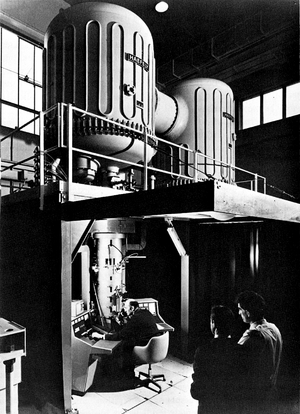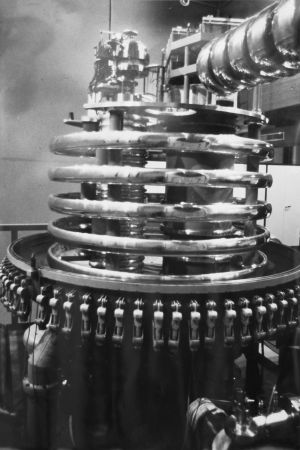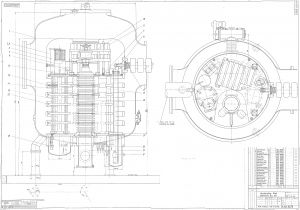AEI EM-7
Not to be confused with the AEG Zeiss EM-7 Electron Microscope from the 40's
The AEI EM-7 represents the largest Electron Microscope thus far constructed on the British Isles. A total of around 40 Units where produced. At the time, it represented on of the most powerful, if not the most powerful comercial Electron Microscope avalible at the time. The EM7 first appeared around 1970. The wearabouts of the 40 units is, but for one, unknown.
Description
The EM7 consists of 2 large Gas Insulated, Water Cooled (originally) High Voltage tanks. These are the High Voltage Cocraft Walton Multiplayer and Feed Transformer, the other the 24 Stage Accelerator, Electron Gun with its Accumulator Bank (NiMH was used), as well as some of the filtering for the high voltage supply.
The Cathodes where housed in a Turret containing <insert number here> cathodes. Changing these, required the entire High Voltage system be vented to atmosphere, and the accelerator tank opened using the machines Crane. The accelerator stack can be seen in a picture taken at the Max Planck Institute for Solid State Physics. To facilitate this cathode change, the entire 1.25MV power supply was rolled away, thus unplugging the feed from the accelerator, and allowing the tank to be lifted.
It is unclear at this time to the author, weather the system used SF6 or Freon insulation gas for its High Voltage system.
The entire Accelerator and High Voltage structure was built onto a metal platform placed above the column and power supply's. This entire structure was in turn placed on the isolated Foundation of the Microscope, located a story lower. The entire machine occupies 4 to 5 stories of a building, owing to the need to move the tank cover, and the need to house the crane to do so.


